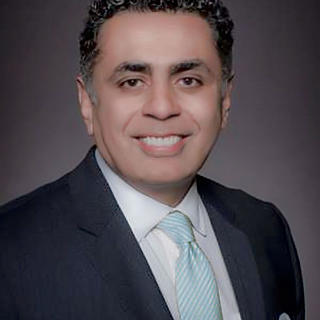Why Healthcare Multiples Are Higher Than Other Sectors
- Dr Allen Nazeri DDS MBA
- Aug 13
- 5 min read

When it comes to mergers and acquisitions (M&A), one trend stands out year after year: Healthcare Multiples consistently exceed those in most other industries. Whether you’re evaluating private equity transactions, strategic acquisitions by large health systems, or IPO-bound healthcare companies, the data is clear, buyers are paying a premium for healthcare assets.
But what makes healthcare so different? Why do we often see deals close at EBITDA multiples that are one, two, or even three points higher than comparable businesses in manufacturing, retail, or other service sectors? The answer lies in a combination of economic resilience, demographic certainty, and structural advantages that make healthcare uniquely attractive to both strategic and financial buyers.
In this article, we’ll explore the core drivers that push Healthcare Multiples higher, how these factors vary across sub-sectors, and what owners can do to position themselves for top-tier valuations.
Healthcare Multiples and Recurring, Predictable Revenue
One of the primary reasons Healthcare Multiples are higher is the stability of revenue streams. Healthcare services, particularly those that are essential or recurring in nature—tend to maintain demand regardless of broader economic conditions.
For example:
Dialysis clinics operate on strict treatment schedules that patients cannot skip.
Oncology centers treat conditions that require ongoing, non-optional care.
Long-term care facilities serve residents who need round-the-clock assistance.
Even in economic downturns, these services continue without major interruption. For buyers, this means cash flows are more predictable and less volatile. Predictability lowers perceived risk, which directly translates into a willingness to pay higher multiples.
Demographic Tailwinds Driving Healthcare Multiples
The United States, along with much of the developed world, is experiencing a demographic shift. An aging population, longer life expectancy, and rising rates of chronic conditions like diabetes, cardiovascular disease, and obesity all contribute to increasing demand for healthcare services.
This is not a short-term trend, it’s a decades-long growth trajectory. Buyers understand that the demand curve in healthcare is largely immune to recessions or consumer fads. The result? They are willing to value these companies more aggressively.
For instance, consider the senior living sector. As the baby boomer generation enters retirement age, the demand for assisted living, skilled nursing, and memory care is accelerating. Investors know that even if the economy slows, the population in need of these services will keep growing, which reinforces the strong Healthcare Multiples in these niches.
Barriers to Entry and Their Impact on Healthcare Multiples
In many industries, a new competitor can quickly disrupt the market. In healthcare, that’s far less likely. Licenses, certifications, clinical compliance requirements, and capital-intensive infrastructure all create high barriers to entry.
In certain states, especially Certificate of Need (CON) states—government-issued approvals limit the number of facilities that can operate in a given market. Owning a CON license can be as valuable as owning the business itself, and this scarcity drives up Healthcare Multiples when these businesses are sold.
These barriers to entry protect established operators, making them more valuable to acquirers who want defensible market share. A buyer who acquires such a company is not just buying cash flow, they’re buying a moat.
Fragmentation and Roll-Up Potential in Healthcare Multiples
Healthcare is still one of the most fragmented industries in the U.S., which is a key reason Healthcare Multiples continue to rise. In segments like dental, behavioral health, urgent care, and physical therapy, thousands of small, independent operators compete for local market share.
Private equity firms see enormous opportunity in consolidating these fragmented sectors. By rolling up multiple small practices under one corporate umbrella, they can achieve:
Centralized administrative functions
Shared marketing and technology infrastructure
Improved payer negotiation power
Better purchasing leverage for supplies and equipment
When a buyer sees a clear path to cost synergies and revenue growth through consolidation, they are often willing to pay more up front—hence higher multiples.
Private Equity Appetite and How It Fuels Healthcare Multiples
Over the last decade, private equity firms have flooded into healthcare. Their interest isn’t accidental—healthcare offers predictable returns, defensive qualities, and scalability.
In the low-interest-rate environment of the 2010s, private equity leveraged cheap capital to acquire healthcare businesses aggressively. Even though interest rates have risen, many funds remain well-capitalized and eager to invest in healthcare because the fundamentals haven’t changed.
This competitive buyer pool means that when a high-quality healthcare asset comes to market, multiple bidders may emerge, creating a bidding war that pushes Healthcare Multiples even higher.
Regulatory Tailwinds and Reimbursement Stability in Healthcare Multiples
While some may view healthcare regulation as a risk, in certain segments it actually acts as a stabilizer. Many healthcare providers are reimbursed by Medicare, Medicaid, or private insurance under relatively stable fee schedules. This predictable revenue model makes lenders more willing to finance acquisitions, which increases buyer confidence and valuation multiples.
In some cases, reimbursement rates are adjusted upward over time, providing built-in revenue growth without major changes in operations. Buyers prize this kind of stability.
How Sellers Can Leverage These Drivers to Maximize Healthcare Multiples
If you’re a healthcare business owner considering an exit, understanding these valuation drivers can help you position your company to achieve a premium multiple. Here are a few actionable strategies:
Highlight Recurring Revenue – Demonstrate the stability of your patient base or contracts.
Showcase Barriers to Entry – If you operate in a CON state or have specialized certifications, make these front and center in your marketing materials.
Demonstrate Scalability – Show how your model can be replicated in new markets.
Document Operational Efficiencies – Buyers pay more for businesses they can integrate seamlessly.
Maintain Compliance Excellence – A clean compliance record reduces perceived risk.
The Future of Healthcare Multiples
While multiples can fluctuate with macroeconomic conditions, the underlying drivers—demographics, regulation, and recurring demand make it likely that healthcare will continue to command a premium over many other industries for the foreseeable future.
That said, not all healthcare companies will achieve top-tier valuations. Businesses with concentrated payer relationships, compliance issues, or operational inefficiencies may find their multiples discounted. Preparing well in advance of a sale is critical to avoid these pitfalls.
Final Word on Healthcare Multiples
The healthcare sector is one of the few where higher valuation multiples are backed by structural advantages rather than temporary market hype. For sellers, that’s good news—if you understand how to position your company to highlight these strengths.
Whether you’re thinking about selling in the next 12 months or 5 years down the line, knowing what drives Healthcare Multiples can help you make smarter strategic decisions today that will pay off at closing.
If you own a healthcare company and want to know what your business could fetch in today’s market, let’s have a confidential conversation.
Dr. Allen Nazeri, aka "Dr. Allen," boasts over 30 years of global experience as a healthcare entrepreneur. He is the Managing Director at American Healthcare Capital and Managing Partner at PRIME exits. Dr. Allen provides strategic growth consulting to leadership teams of both privately held and publicly listed companies, ensuring their preparedness for successful exits.
As an M&A advisor with over a decade of hands-on experience in deal-making, I’ve seen a lot. Deals stall. Offers get withdrawn. Valuations shift. But one of the most common, and underestimated reasons a sale can fall apart is partnership misalignment on the sell-side. Whether it's co-founders, silent partners, or family members with equity stakes, when there's a disconnect in vision, values, or urgency, deals can unravel quickly.
He holds a Dental Degree from Creighton University and an MBA in M&A and Investment Banking from the University of Bedfordshire. Dr. Allen is the author of "Value Engineering: Strategies to 10X the Value of Your Clinic and Dominate the Market!" and the brand new book "Selling Your Healthcare Company at a Premium". Dr. Allen offers a free valuation to business owners ready for a partial or complete exit strategy. Dr. Allen collaborates with strategic buyers, private equity firms, and institutional investors, taking direct accountability for the annual successful sell-side representation of nearly $750M in enterprise value.
To have a confidential discussion about your company and receive a free valuation, please email Allen@ahcteam.com or Allen@ahcpexits.com
You can now communicate with Dr. Allen's clone https://www.delphi.ai/drallen





Comments